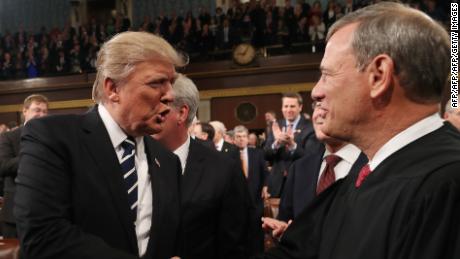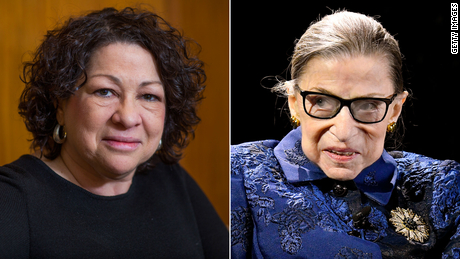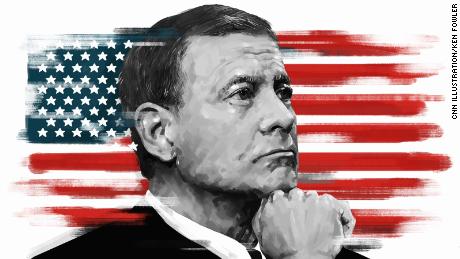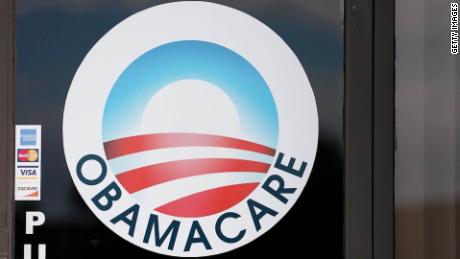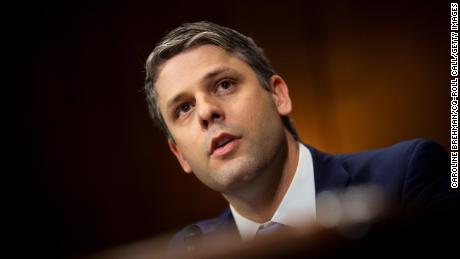Now, judges are joining the scorning and directing criticism toward one another as they take up cases involving the President.
Liberal jurists have voiced concern about a President who is shattering norms and challenging the rule of law. Conservative jurists, in turn, have defended a presidency they see as under attack, including by a judicial resistance. The language from both sides has recently grown coarser.
With Trump litigation escalating, including at the Supreme Court, and the country moving closer to the November presidential election, such clashes are certain to intensify.
Dissenters did not take that decision at face value. “(W)ould it not be fair for our fellow Americans to suspect that something other than law was afoot?”
wrote Judge J. Harvie Wilkinson. “The majority is using a wholly novel and nakedly political cause of action to pave the path for a litigative assault upon this and future Presidents.”
Judge Diana Gribbon Motz, who
wrote for the majority, countered, “The dissent portrays us as ‘partisan warriors.’ … But we remain confident that our narrow holding … is the essence of restraint. Readers may compare our measured approach with the dramatics of the dissent and draw their own conclusions.”
The tone was self-conscious all around, as the judges implicitly acknowledged increased scrutiny of their own motives in the era of Trump.
Larger questions of Trump’s behavior were in the air during the Supreme Court’s arguments last week over whether his personal financial records could be subpoenaed from his longtime accountants and banks.
In her first question,
liberal Justice Ruth Bader Ginsburg showed her hand regarding Trump: “Every President voluntarily turned over his tax returns. So it gets to be a pitched battle here because President Trump is the first one to refuse to do that. And, initially, he said because an audit was ongoing. Now it seems to be broader than that.”
Chief Justice John Roberts, a conservative, alternatively suggested the President was being hounded: “You’ve got, in this case, three different House committees seeking subpoenas. You’ve got the district attorney in New York. You know, depending upon party composition of different bodies in the future, you might have the Senate joining in. How do you measure harassment in a case like that?”
Justice Clarence Thomas characterized the third-party subpoenas as more personal to Trump, intimating that the asserted grounds — tied to Congress’ effort to write legislation — were “pretextual” and the true intention: “to remove the President from office.”
Three months ago, Justice Sonia Sotomayor declared the conservative Supreme Court majority was favoring the Trump administration over other parties when the justices handled requests for emergency intervention. Referring to such emergency “stay” requests, she wrote that “the Court’s recent behavior on stay applications has benefited one litigant over all others.” She contrasted that pattern to the majority’s rejection of pleas from condemned inmates, “where the risk of irreparable harm is the loss of life.”
“I fear this disparity in treatment erodes the fair and balanced decisionmaking process that this Court must strive to protect,”
Sotomayor wrote in a dissenting opinion that
drew the Twitter wrath of Trump at the time.
‘Obama judges’ or ‘Trump judges’
Ideological differences on the federal bench are age-old, as are tensions between a president and judges. But Trump, from the start as a candidate, targeted the judiciary more intensely.
In May 2016, he criticized US District Judge Gonzalo Curiel, then hearing a fraud claim in San Diego against Trump University, for his Mexican heritage. Curiel was born in Indiana and has been a federal district judge since 2012. Trump questioned Curiel’s ability to rule fairly because Trump was campaigning on the pledge to build a wall between the US and Mexico.
A few months later, newly elected President Trump referred to US District Judge James Robart as a “so-called judge” because he temporarily blocked Trump’s first travel ban aimed at majority-Muslim countries. Trump added that “if something happens blame him and the court system.” The President continued to attack federal district court rulings, calling them “ridiculous” and “political.”
US Court of Appeals Judge Jay Bybee, a Republican appointee on the California-based 9th Circuit, tried to counter Trump. As an aside in an opinion related to the travel ban, Bybee wrote, “The personal attacks on the distinguished district judge [Robart] and our colleagues were out of all bounds of civic and persuasive discourse — particularly when they came from the parties. … Such personal attacks treat the court as though it were merely a political forum in which bargaining, compromise, and even intimidation are accepted principles.”
Trump continued his Twitter invective against judges. Roberts entered the conflict in November 2018 after the President disparaged a judge who ruled against the administration as an “Obama judge.”
“We do not have Obama judges or Trump judges, Bush judges or Clinton judges,” Roberts said in a statement first given to The Associated Press. “What we have is an extraordinary group of dedicated judges doing their level best to do equal right to those appearing before them.”
Trump responded within hours with a string of tweets that began: “Sorry Chief Justice John Roberts, but you do indeed have ‘Obama judges,’ and they have a much different point of view than the people who are charged with the safety of our country.”
‘Any other president’
That was the last time Roberts pointedly rebuked the President.
Earlier this year, the chief justice himself was the focus as a federal judge in Wisconsin contended Roberts’ record accelerated polarization in America.
“The Roberts Court has been anything but passive,” Judge Lynn Adelman, an appointee of President Bill Clinton,
wrote in the Harvard Law & Policy Review, a student law journal published by the liberal American Constitution Society.”Rather, the Court’s hard right majority is actively participating in undermining American democracy.” He pointed to Roberts’ conservative record particularly on campaign finance and voting rights issues.
It is rare for judges to complain about each other in political terms. That is what made the recent exchanges on the 4th US Circuit Court of Appeals so striking. Both sides, Democratic and Republican appointees, questioned each other’s motives in a way that could suggest a new pattern as Trump litigation moves toward resolution.
Judges on the Richmond-based court have in the past prided themselves on their customs of courtesy, which include coming down from the bench after each case to shake hands with the lawyers who argued. The vote in the emoluments case divided the nine Democratic-nominated judges and six Republican-nominated judges.
In response to Motz’s opinion, Wilkinson suggested that the majority had done more than simply permit the dispute over Trump properties to go forward; he said the majority had undermined the judiciary with a partisan approach rather than a good-faith effort.
“When partisan fevers grip the national government,” insisted Wilkinson, “the judiciary must operate as a non-partisan counterweight and discourage suits whose inevitable denouement will make us part of the political scrum.” The 1984 Ronald Reagan appointee, the longest-serving member of the court, added that he held “no brief for the particular conduct of this or any President. I fear only for the future of the courts.”
“It may be that at this time the judicial branch, with its aspirations to be above the fray, is our country’s best remaining hope for maintaining public trust. Shall we sacrifice that hope in the service of a lawsuit, which asks us to exercise no traditional judicial power… ?”
Judge James Wynn, part of the majority, wrote a separate statement addressing dissenting judges’ claims of partisanship.
“Editorial writers, political speechwriters, and others are free, of course, to make a career out of accusing judges who make decisions that they dislike of bias and bad faith,” Wynn wrote. “But the public’s confidence and trust in the integrity of the judiciary suffer greatly when judges who disagree with their colleagues’ view of the law accuse those colleagues of abandoning their constitutional oath of office.”
Early in Trump’s tenure, judges took pains to treat him as any other president. The five-justice Supreme Court majority that upheld Trump’s travel ban, in its third iteration, in 2018, stressed that “the entry suspension is an act that is well within executive authority and could have been taken by any other President.”
During the nine justices’
recent hearing on the Trump documents sought by the Democratic-led House and a New York grand jury, there was an emphasis on Trump as a distinctive target of litigation.
At one point, Thomas raised the possibility that a president could be overwhelmed by scores of subpoenas from multiple investigations.
House counsel Douglas Letter protested that the disputed subpoenas were to private businesses. “Nothing is required of the President here for these subpoenas to be fully complied with,” Letter said. “Not a single thing is required of the President or the White House.”
Rejoined Thomas: “Well, I think we all know it’s about the President.”

